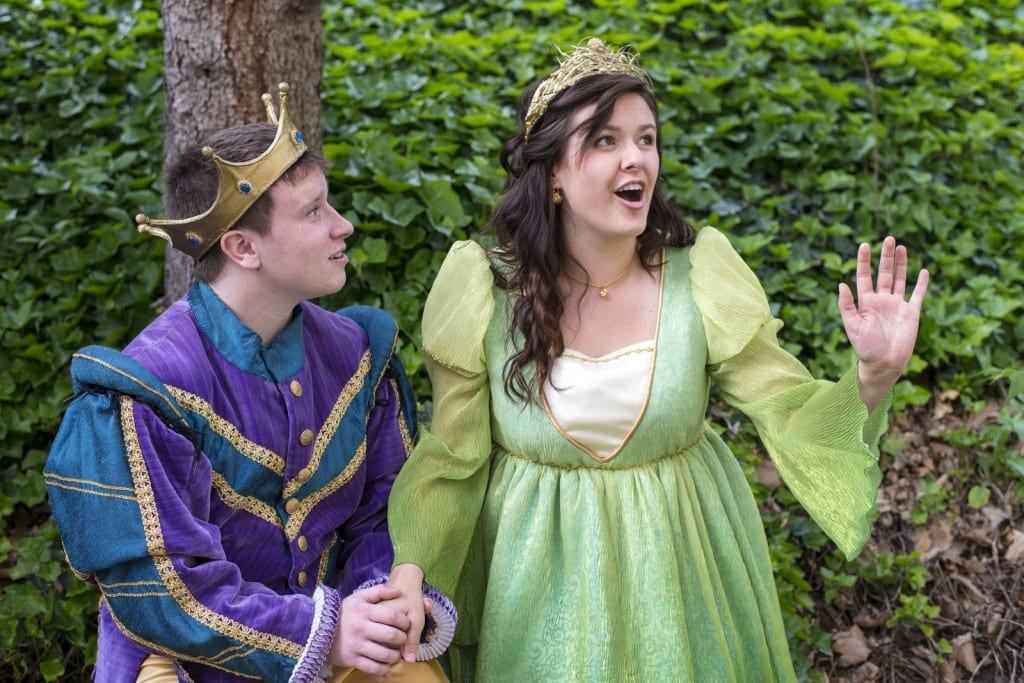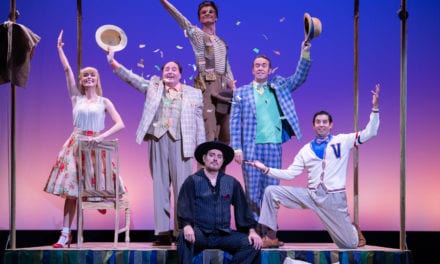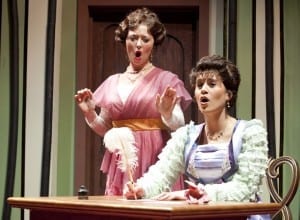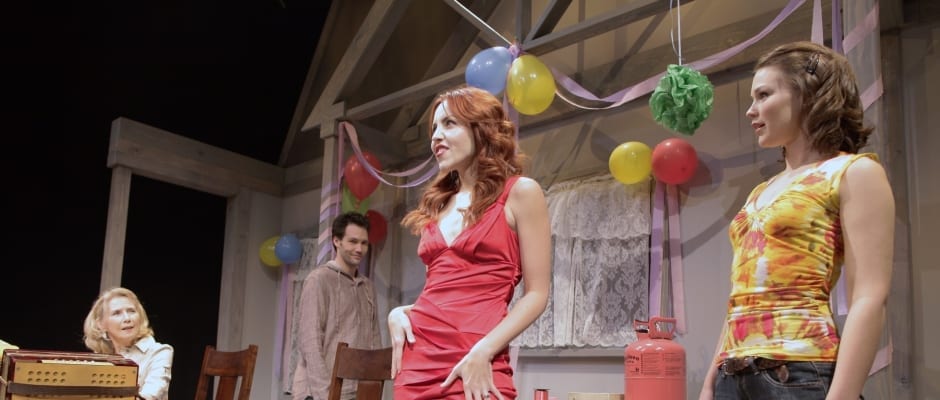SALT LAKE CITY — “I’m in love with a girl named Fred!” proclaims Prince Dauntless to the audience of Once Upon a Mattress, as he sings of his love for the visiting Princess Winnifred. But before the two can marry and live happily ever after, Winifred must prove her royalty by passing a series of tests, which culminate in a test of whether she can detect a small pea beneath 20 mattresses—a task that only a refined princess should be able to do.
And it’s easy to see why Dauntless is in love with Winnifed. As Princess Winnifred, Jessa Brock has every trait that a musical comedy lead could need. She was charismatic on stage in every scene, whether it was a tender one-on-one love scene with Dauntless or a big musical dance number like “Song of Love.” Brock’s adorable demeanor in her first scene (and during the song “Shy”) established the forthright nature of Winnifred and made her a fun fish out of water in the royal court. Furthermore, Brock has an entrancing voice which was especially well suited for the song “Happily Ever After.” Brock was also adept at David Schmidt‘s choreography in “Spanish Panic,” even though she had her left foot in a walking cast. I was surprised that the cast in no way impeded Brock’s performance of the frantic dance, and I commend her for flawless performance in spite of her injury.
John Yerke was ideal as Prince Dauntless. His meek demeanor in the face of the domineering Queen Aggravain (Shalee Mortensen Schmidt) helped establish why Dauntless was eager to escape from his mother’s influence. I also appreciated Yerke’s efforts to show Dauntless as being emasculated by his mother because it provided a good starting point from which the character could grow and develop for the rest of the play.
Brian Manternach played King Sextimus the Silent. Although the character communicates entirely through actions and facial expressions, the role is one of the most enjoyable to watch in the play (much like the Mute in The Fantasticks). Manternach fully capitalized on the comedic nature of his character, especially in “Man to Man Talk,” which, combined with Marshall Barer‘s lyrics (sung by Yerke), made me laugh harder than at any other time in the play. I also enjoyed Jamie Urry as Lady Larkin for her strong voice during “In a Little While” and the way she ensured that Lady Larkin was vulnerable and yet unwilling to surrender herself to her circumstances.
Despite these strong performances, I just couldn’t get involved with most of the characters. I think this is because of director David Schmidt’s insistence to make this production of Once Upon a Mattress have the feeling of a bedtime story. Most of the lines in the play were delivered directly to the audience in an exaggerated manner, which was reminiscent of how adults read to young children. Moreover, actors rarely looked at one another when they were speaking. These directorial decisions made it difficult for relationships among characters. Consequently, some performances felt disconnected from the rest of the action on stage.
Nowhere was this disconnect more apparent than in Taylor Smith‘s performance as Sir Harry. Smith portrayed Harry as being self-absorbed and consciously performing for the audience. This directorial choice for Harry it difficult for me to believe that Lady Larkin would fall in love with him. Only for Shalee Mortensen Schmidt as Queen Aggravain did the choice of making the characters exaggerated work, and this was both because of the performer’s talent and because the character is the most similar to characters seen in traditional fairy tales.

Shalee Mortensen Schmidt as Queen Aggravain and John Yerke as Prince Dauntless. Photo by Spencer Sandstrom.
But the flaws in David Schmidt’s directing were outweighed by the strong aspects of the show. The pacing of the play moved quickly (with the first act lasting 70 minutes and the second act lasting just 40 minutes), and none of the scenes dragged. David Schmidt’s choreography was also consistently clever; the movement for “Shy” reinforced the ironic lyrics, and “Spanish Panic” and “Song of Love” together served an extremely strong end to the first act. The show would not be as enjoyable as it is without David Schmidt’s concern for both visual spectacle and dramatic pacing.
In addition to being enjoyable to watch, Once Upon a Mattress was pleasing to look at. The multilevel castle set designed by Kevin Dudley gave David Schmidt plenty of interesting places on the stage for the actors to move, which kept the scenes from seeming monotonous. Valerie Nishiguchi‘s medieval costumes were sumptuous (such as the royal family’s costumes) and appropriate for the characters. More importantly, they permitted the cast to move and dance unhindered and in some songs (like “Shy”) even enhanced David Schmidt’s choreography. And Ethan Olsen‘s lighting added an appropriate level of whimsy to some of the scenes (such as when Winnifred meets Sir Harry or during “That Baby of Mine”). I wish, however, that less stage fog had been used in some scenes. The Babcock Theatre is not very large and the fog made some scenes difficult to see (like the beginning of “The Minstrel, the Jester, and I”). Plus, the fog would quickly enveloped the audience and leave that distinctive stage fog smell.
Despite my complaints, I have to admit that Salt Lake Shakespeare has a very cute family friendly production. The score by Mary Rodgers is well served by the vocally strong cast, and Jessa Brock has made the words written by Jay Thompson, Marshall Barer, and Dean Fuller, seem vibrant and exciting. Once Upon a Mattress isn’t a perfect show, but it is an excellent choice for Salt Lake Shakespeare’s first musical.







